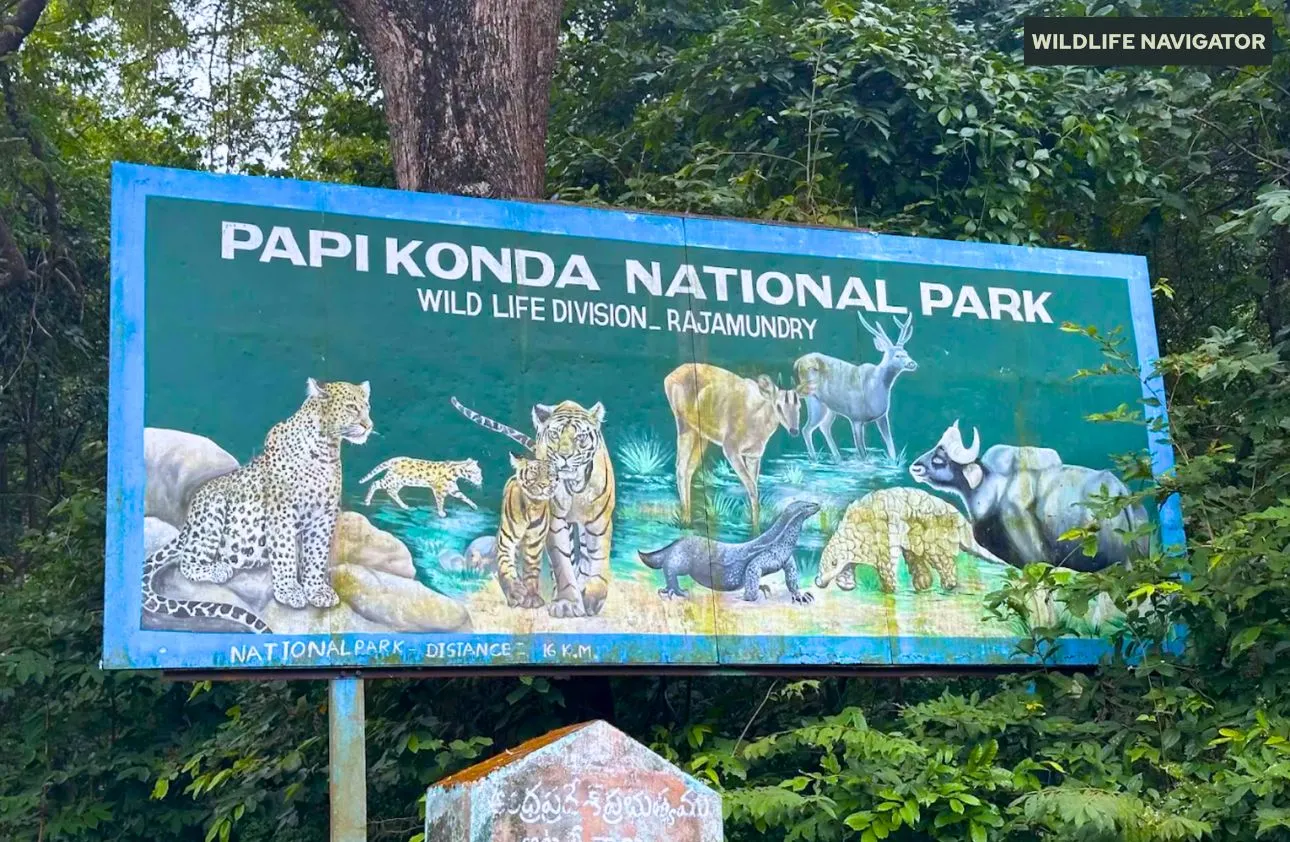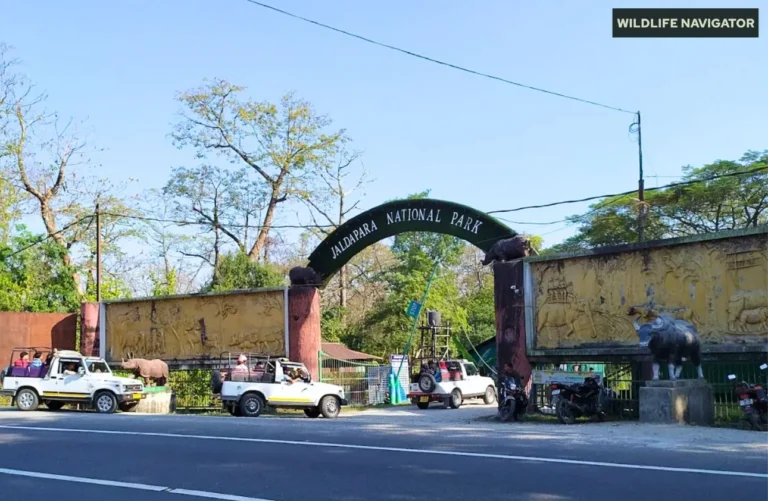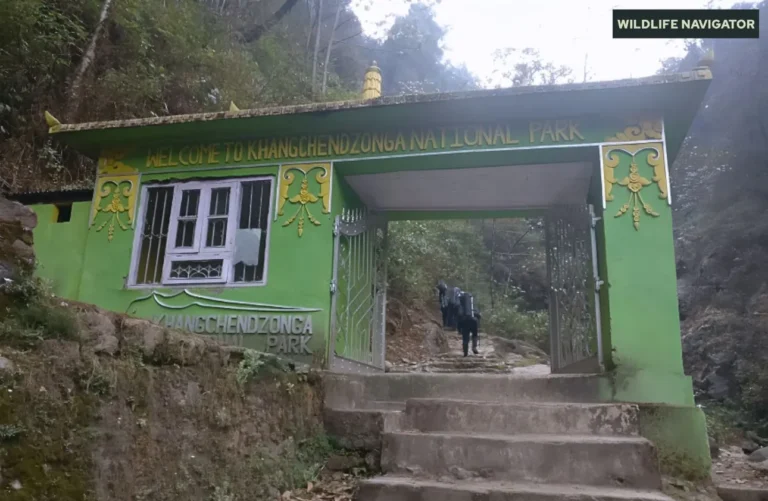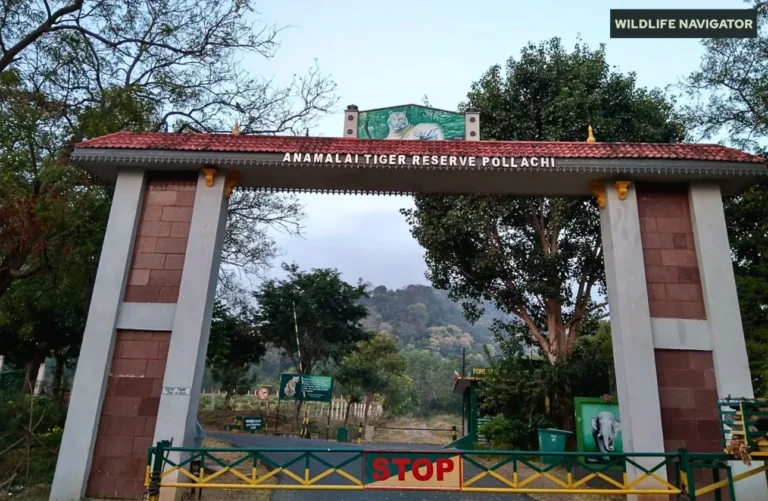Papikonda National Park: Explore Wildlife, Flora, and Scenic Landscapes in Andhra Pradesh

Papikonda National Park is a hidden gem of biodiversity located in the East Godavari and West Godavari districts of Andhra Pradesh, India. Nestled in the lush hills of the Eastern Ghats, this national park is known for its rich forests, flowing rivers, and scenic landscapes that attract nature enthusiasts, wildlife lovers, and trekkers alike. The park is part of the Eastern Ghats’ unique ecosystem and plays a vital role in preserving several endemic and endangered species of both flora and fauna.
Covering an expansive area, Papikonda is not just a haven for wildlife but also a sanctuary for those who seek solace amidst nature. The Godavari River, which meanders through the park, adds to its charm, creating picturesque valleys, waterfalls, and rippling streams that enhance the experience for visitors. Its diverse terrain, from dense forests to rocky hills, provides an ideal habitat for a variety of wildlife species and migratory birds.
Papikonda National Park is one of the lesser-known but ecologically significant national parks in India. Its forests serve as an important corridor for wildlife movement and contribute to regional biodiversity conservation. For travellers looking to explore India’s natural beauty away from crowded tourist spots, Papikonda offers a unique blend of adventure, serenity, and wildlife observation.
Geography and Landscape
Papikonda National Park is located in the Eastern Ghats of Andhra Pradesh, spanning the East Godavari and West Godavari districts. Its terrain is a unique blend of hills, valleys, and riverine ecosystems, making it an ideal habitat for diverse flora and fauna. The park’s landscapes are not only ecologically significant but also visually stunning, with lush forests, rocky hills, and winding rivers creating breathtaking views.
Terrain
The park features rugged hills, deep valleys, and rolling plateaus. The terrain varies from dense forested areas to rocky outcrops, providing habitats for a wide range of wildlife species. The hilly areas also offer panoramic viewpoints that are popular among trekkers and nature photographers.
Climate
Papikonda experiences a tropical climate with moderate to heavy rainfall during the monsoon season. Summers are warm, while winters are mild and pleasant, making October to March the best time to visit. The seasonal variations support diverse plant growth and influence animal behaviour, including migratory patterns for birds.
Major Rivers
The Godavari River, one of India’s largest rivers, flows through the park, creating fertile riverbanks and small waterfalls. Its tributaries provide water sources for the wildlife and enrich the surrounding forests. The presence of rivers also adds to the scenic beauty, making it a popular destination for eco-tourism.
Flora of Papikonda National Park
Papikonda National Park is a treasure trove of plant diversity. Its forests are home to numerous species of trees, shrubs, herbs, and flowering plants. The rich vegetation not only supports wildlife but also adds to the park’s scenic beauty, attracting botanists, nature lovers, and photographers.
Forests
The park mainly consists of dry deciduous and moist deciduous forests, along with patches of hill forests. These forest types create a layered ecosystem that supports both small and large animals.
- Dry deciduous forests: Dominated by teak, Terminalia, and other hardwood trees.
- Moist deciduous forests: Rich in biodiversity, including a mix of broadleaf trees and shrubs.
- Hill forests: Found in rocky and elevated areas, supporting specialised plant species.
Notable Trees
Papikonda is home to several significant tree species, many of which have economic and ecological importance:
- Teak (Tectona grandis) – Valuable hardwood tree.
- Terminalia species – Includes medicinal and timber varieties.
- Bamboo – Supports wildlife and prevents soil erosion.
- Indian gooseberry (Amla) – Medicinal fruit-bearing tree.
Medicinal Plants
The park is rich in herbal plants used in traditional medicine:
- Tulsi (Holy Basil)
- Ashwagandha
- Aloe vera
- Various ferns and shrubs with medicinal properties
Flowers and Shrubs
Papikonda also has a variety of colourful flowers and shrubs, which bloom seasonally, enhancing the park’s visual appeal:
- Hibiscus and Jasmine species
- Wild orchids
- Seasonal flowering shrubs attracting pollinators
Fauna of Papikonda National Park
Papikonda National Park is renowned for its rich and diverse wildlife. The combination of dense forests, rivers, and hilly terrain creates ideal habitats for a variety of animals, birds, reptiles, and insects. Visitors can expect to see both common and rare species, making it a haven for wildlife enthusiasts and photographers.
Mammals
The park is home to several important mammal species, some of which are endangered:
- Tiger – The apex predator of the park, though sightings are rare.
- Leopard – Agile and elusive, often seen in dense forested areas.
- Sloth Bear – Known for its foraging behaviour on termites and fruits.
- Sambar Deer – Commonly found grazing in open forest patches.
- Indian Pangolin – A shy and nocturnal species.
- Langurs and Bonnet Macaques – Frequently seen in forested regions.
Birds
Papikonda attracts a variety of resident and migratory birds, making it a prime destination for birdwatchers:
- Indian Peafowl (National bird of India)
- Malabar Hornbill
- Eagles and Kites
- Kingfishers along the rivers
- Various species of owls, woodpeckers, and migratory waterfowl
Reptiles and Amphibians
Reptiles and amphibians thrive in the park’s moist forest floors and riverbanks:
- Snakes: Cobra, Rat Snake, and Pit Vipers
- Lizards: Monitor lizards and agamids
- Frogs and Toads: Found mostly near streams and wetlands
Insects and Butterflies
The park supports a vibrant population of insects and butterflies, crucial for pollination:
- Swallowtail butterflies and Monarchs
- Dragonflies near rivers
- Various beetles and ants contributing to the ecosystem
Adventure & Activities
Papikonda National Park offers a variety of activities for nature lovers and adventure enthusiasts. From trekking through scenic trails to observing wildlife in their natural habitat, visitors can enjoy an immersive experience in this pristine environment.
Trekking & Nature Trails
The park’s hills and valleys provide excellent trekking opportunities:
- Papikonda Hill Trails – Moderate trekking with panoramic views of forests and rivers.
- Valley Walks – Gentle trails along the riverbanks for casual walkers.
- Eco-Trails – Guided walks focusing on the park’s flora, fauna, and geology.
Wildlife Safari
Though not as commercialised as other parks, safaris are available in limited zones:
- Jeep Safaris – Early morning or evening safaris for spotting mammals like deer, leopards, and wild boars.
- Guided Wildlife Tours – Conducted by park rangers with insights on animal behaviour and habitats.
Birdwatching
Papikonda is a paradise for bird enthusiasts:
- Best time: Early morning or post-monsoon season.
- Common sightings: Hornbills, kingfishers, eagles, and migratory waterbirds along riverbanks.
- Equipment: Binoculars and cameras with zoom lenses recommended.
Photography Opportunities
The park offers diverse photography options for both landscapes and wildlife:
- Forested hills and valleys provide perfect landscape shots.
- Riverine areas and waterfalls are ideal for nature photography.
- Wildlife photography requires patience; early mornings are the best time.
Conservation Efforts
Papikonda National Park plays a crucial role in preserving biodiversity in the Eastern Ghats. Ongoing conservation initiatives aim to protect wildlife, restore habitats, and manage human impact.
Protected Status
- Papikonda is designated as a National Park, providing legal protection to its flora and fauna.
- The park forms part of an eco-sensitive zone, restricting activities that could harm the environment.
- The designation ensures stricter monitoring against poaching and illegal logging.
Conservation Projects
Several initiatives have been implemented to maintain the ecological balance:
- Tiger and Leopard Conservation – Monitoring big cat populations and their prey species.
- Reforestation Programs – Planting native tree species to restore degraded areas.
- Wildlife Corridors – Maintaining forest connectivity to allow safe movement of animals.
- Community Awareness Programs – Educating nearby villages about conservation and sustainable practices.
Challenges
Despite protection, the park faces several challenges:
- Human-Wildlife Conflict – Crop damage and occasional encounters with wildlife near villages.
- Poaching and Illegal Logging – Threats to endangered species and timber resources.
- Habitat Fragmentation – Expansion of roads and agriculture affecting animal corridors.
- Tourism Pressure – Unregulated visitor activities can disturb sensitive ecosystems.
How to Reach Papikonda National Park
Papikonda National Park is well-connected through various modes of transport, making it accessible for travellers coming from different parts of India.
By Air
- The Rajahmundry Airport is the nearest airport, located approximately 80 km from the park.
- Regular flights connect Rajahmundry to major Indian cities like Hyderabad, Chennai, and Bangalore.
- From the airport, travelers can hire taxis or use local buses to reach the park.
By Train
- Rajahmundry Railway Station is the closest railhead, around 75–80 km from the park.
- Trains from major cities like Hyderabad, Visakhapatnam, and Chennai connect to Rajahmundry.
- Local transport, taxis, and buses are available from the station to the park entrance.
By Road
- The park is accessible by road via NH16 and state highways from Rajahmundry and surrounding towns.
- Private taxis and buses operate regularly, making road travel convenient.
- Self-driving is also an option for travellers who prefer flexibility and scenic routes.
Best Time to Visit
- October to March is ideal, with pleasant weather and reduced rainfall.
- Monsoon months (June to September) bring heavy rainfall, making trekking and safari difficult.
- Wildlife sightings are generally better in cooler months when animals are more active.
Accommodation and Facilities
Papikonda National Park provides options for visitors who wish to stay nearby or inside the park area, ensuring a comfortable and convenient experience while exploring its natural beauty.
Inside the Park
- The park has limited eco-lodges and guesthouses operated by the forest department.
- These accommodations focus on eco-friendly stays, blending with the natural surroundings.
- Staying inside the park allows early morning wildlife sightings and easy access to trekking trails.
Nearby Towns
- Rajahmundry and surrounding towns offer a wide range of hotels, resorts, and guesthouses.
- Options range from budget lodgings to mid-range hotels with modern amenities.
- Homestays in nearby villages provide a chance to experience local culture and cuisine.
Permits & Entry Fees
- Visitors must obtain entry permits from the forest department before entering the park.
- Some activities, such as safaris or guided treks, may require additional permits.
- Entry fees vary for domestic and international tourists; children often receive discounted rates.
Visitor Facilities
- Basic amenities like restrooms and drinking water points are available at designated areas.
- Guided tours and park rangers are available to provide information and ensure safety.
- Signboards and trails are maintained for a safe and enjoyable trekking experience.
Tips for Visitors
Visiting Papikonda National Park can be an enriching experience if you plan carefully and follow some simple guidelines. These tips ensure both safety and enjoyment while respecting the park’s ecosystem.
Wildlife Etiquette
- Maintain a safe distance from animals; avoid sudden movements or loud noises.
- Do not feed wildlife, as it disrupts their natural behavior.
- Stick to designated trails to prevent disturbing habitats and reduce the risk of encounters with snakes or other wildlife.
Gear & Essentials
- Clothing: Wear comfortable, lightweight clothing in earthy tones to blend with the environment.
- Footwear: Sturdy trekking shoes are recommended for rough terrain.
- Equipment: Binoculars, cameras with zoom lenses, and a field guide for flora and fauna enhance the experience.
- Carry water, snacks, and a first-aid kit for longer treks or safari trips.
Local Culture & Cuisine
- Nearby villages offer traditional Andhra cuisine; try local delicacies like Pesarattu, Gongura Pachadi, and Pulihora.
- Respect local customs and traditions while interacting with villagers.
- Supporting local artisans and homestays contributes to sustainable tourism.
Conclusion
Papikonda National Park is a serene and ecologically significant destination in Andhra Pradesh, offering a perfect blend of wildlife, lush forests, and scenic landscapes. From dense deciduous forests to flowing rivers and rolling hills, the park provides a unique experience for nature lovers, photographers, and adventure enthusiasts. Its diverse flora and fauna, including tigers, leopards, deer, and a variety of birds, make it an important hotspot for biodiversity in the Eastern Ghats.
Visiting Papikonda is not just about exploring nature but also about appreciating and supporting conservation efforts. The park’s eco-friendly initiatives, protected habitats, and community engagement programs ensure that its wildlife and landscapes are preserved for future generations.
For travellers seeking a tranquil yet adventurous getaway away from crowded tourist spots, Papikonda National Park is an ideal choice. Responsible tourism, adherence to park guidelines, and respect for local culture will help visitors enjoy an unforgettable experience while contributing to the preservation of this natural treasure.
FAQs about Papikonda National Park
1. Is Papikonda National Park open year-round?
Yes, the park is open throughout the year. However, the best time to visit is October to March when the weather is pleasant and wildlife sightings are more frequent.
2. What is the best time to spot tigers and other wildlife?
Early mornings and late afternoons are ideal for spotting wildlife. Tigers and leopards are mostly active during these times, while deer and birds can be seen throughout the day.
3. Are guided tours available inside the park?
Yes, guided tours and eco-trails are available. Park rangers provide valuable insights about the flora, fauna, and local ecology, enhancing the visitor experience.
4. Do I need a permit to enter Papikonda National Park?
Yes, visitors must obtain an entry permit from the forest department. Certain activities like safaris and trekking may require additional permits.
5. What accommodation options are available near the park?
Options range from eco-lodges inside the park to hotels, resorts, and homestays in nearby towns like Rajahmundry. Homestays offer cultural experiences along with comfortable stays.
6. Are there any restrictions for visitors?
- Avoid littering and disturbing wildlife.
- Stick to marked trails and respect local regulations.
- Feeding animals is strictly prohibited.





